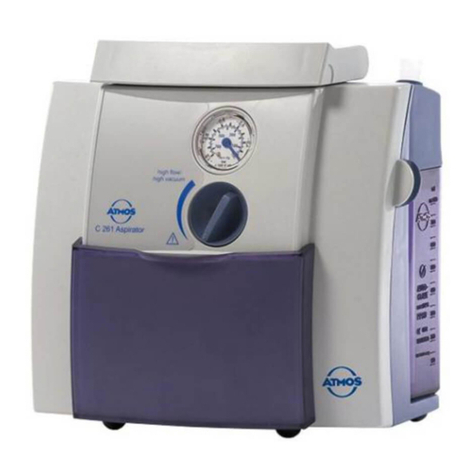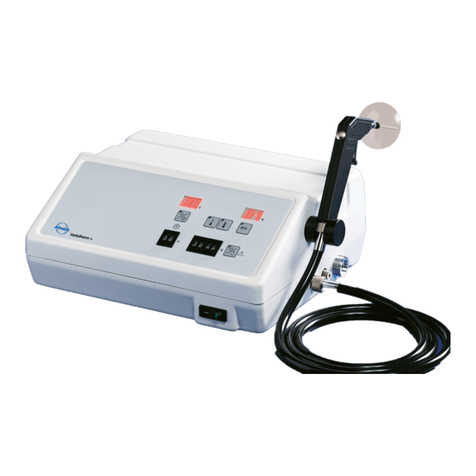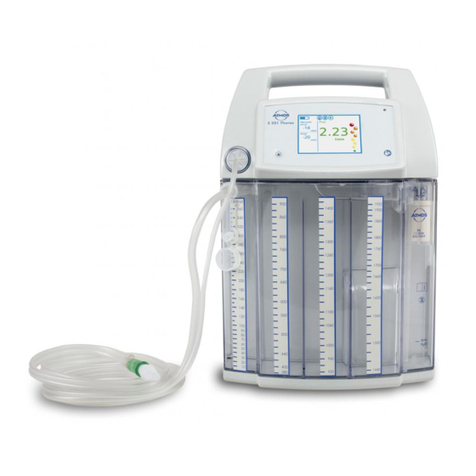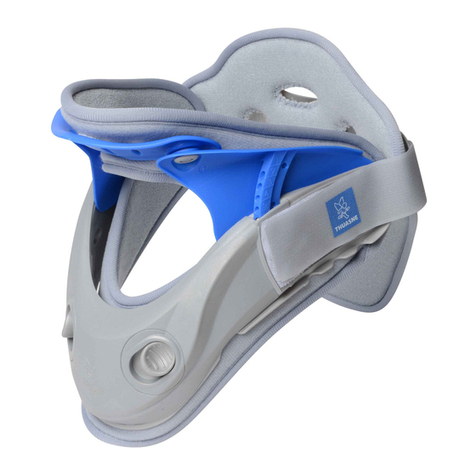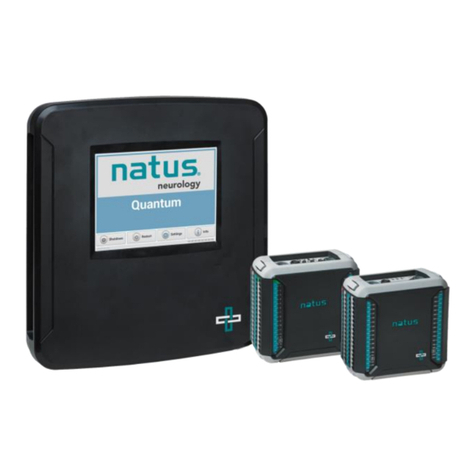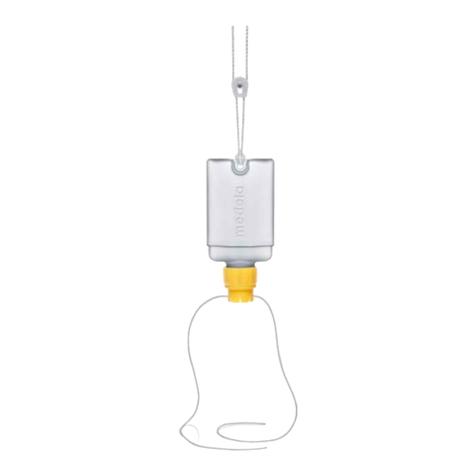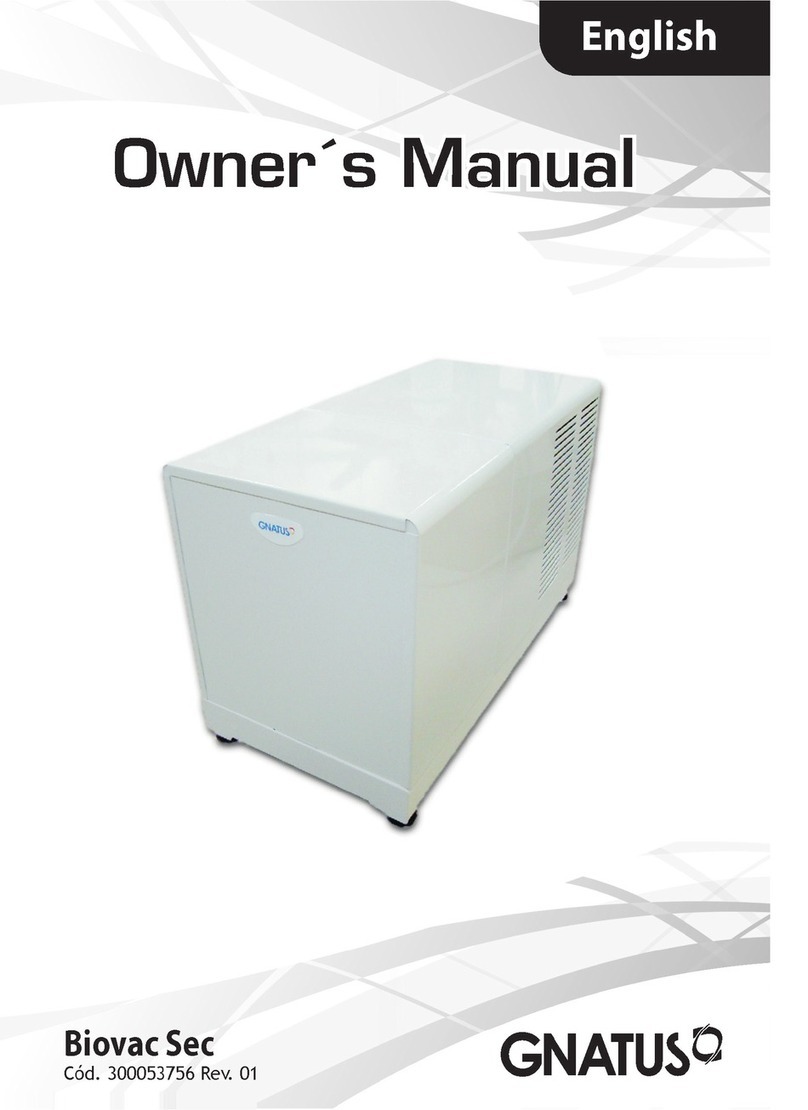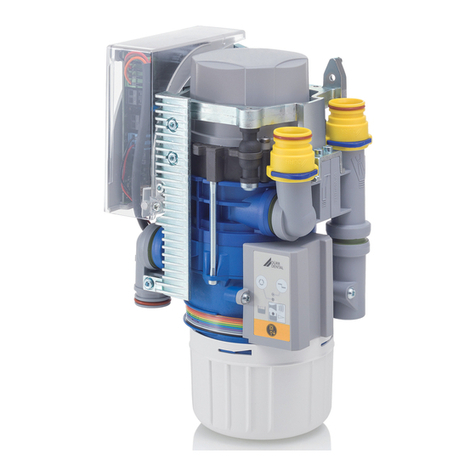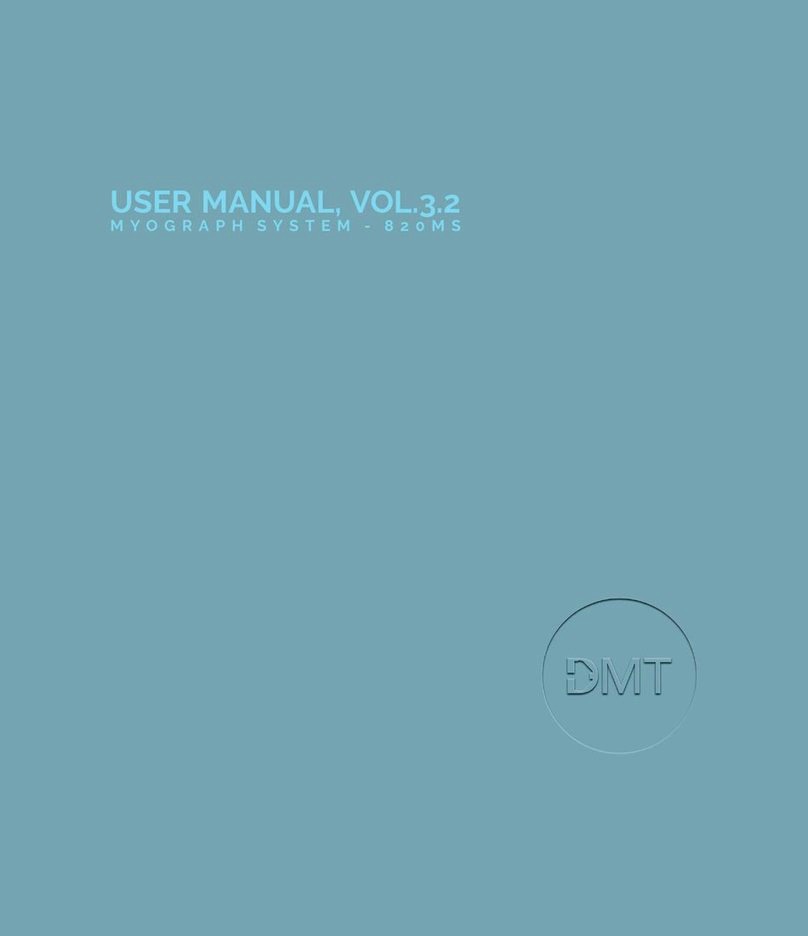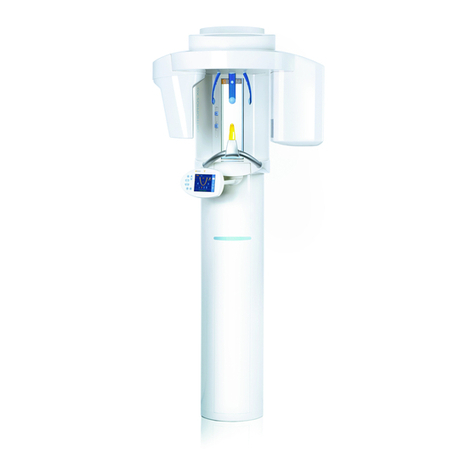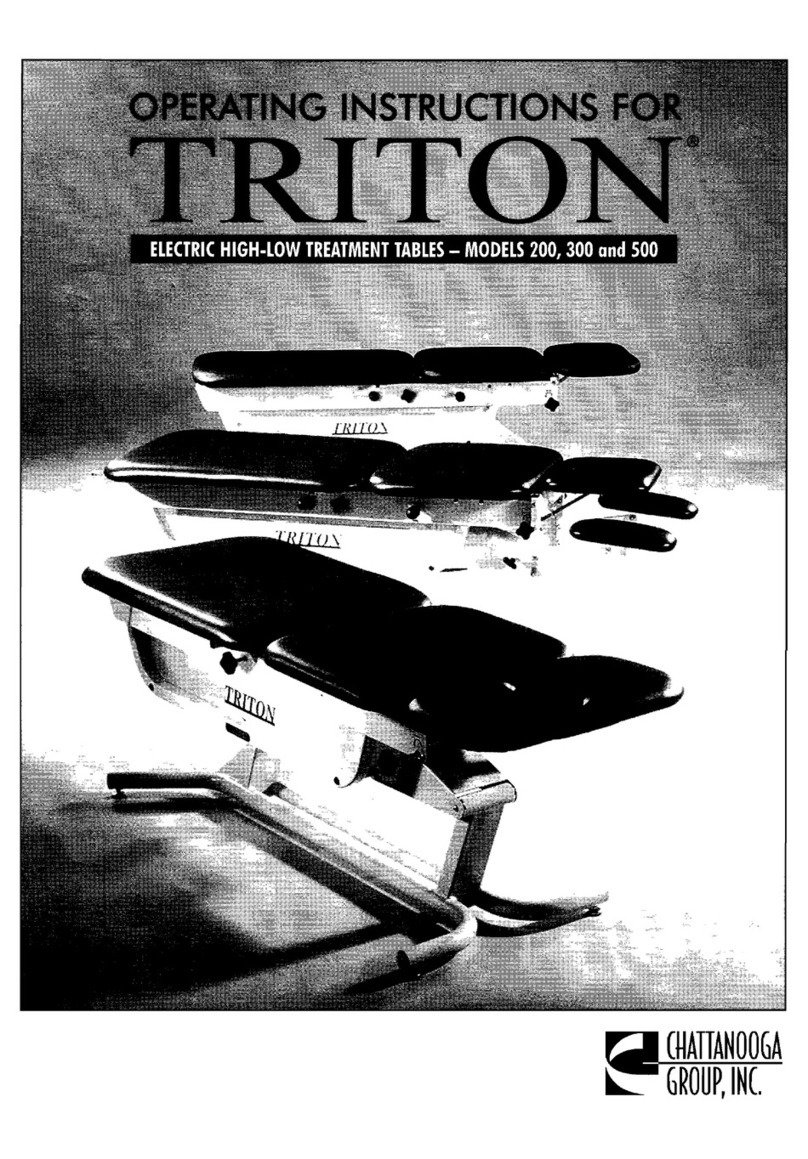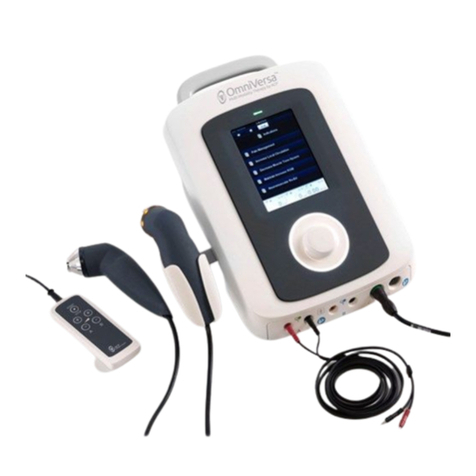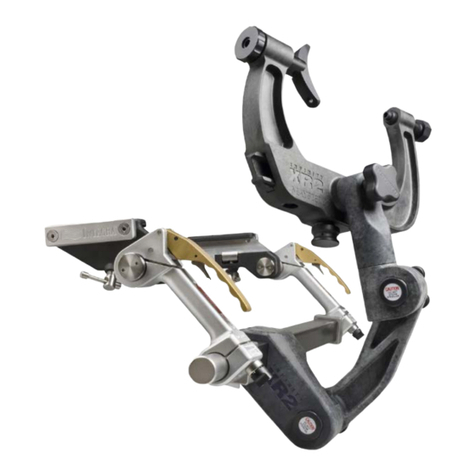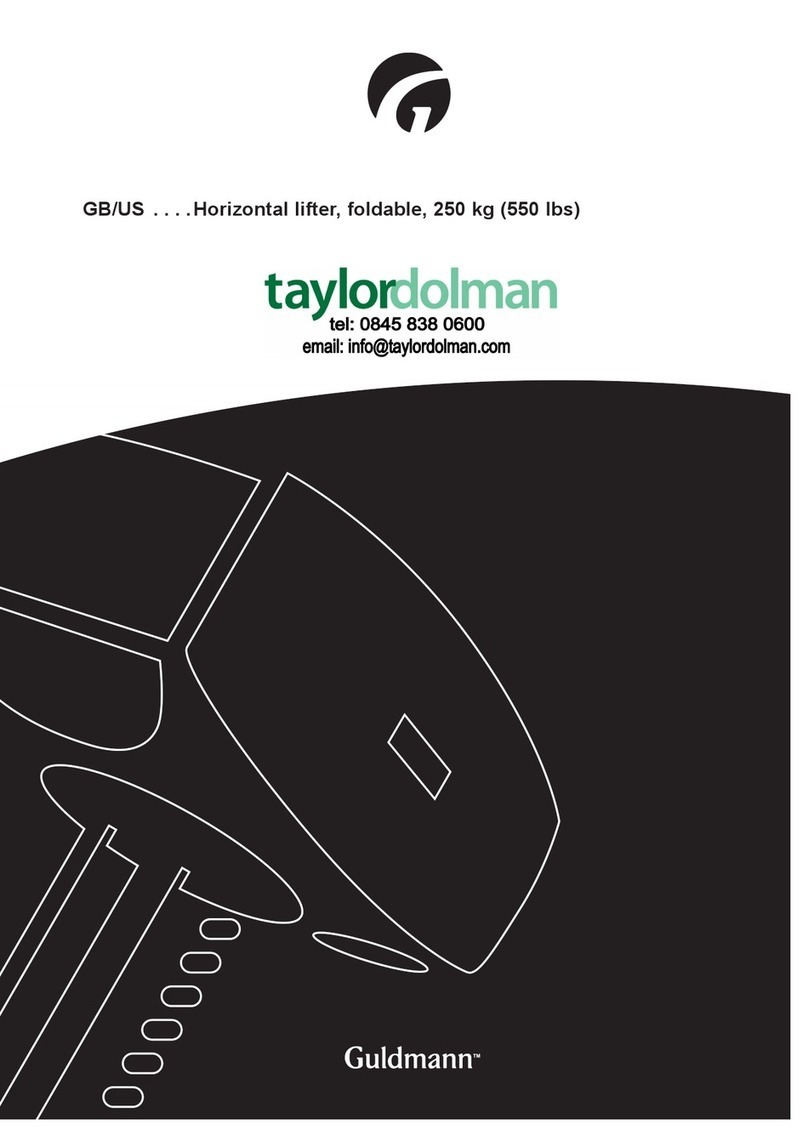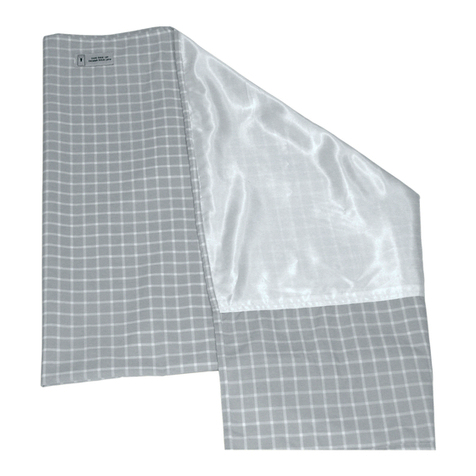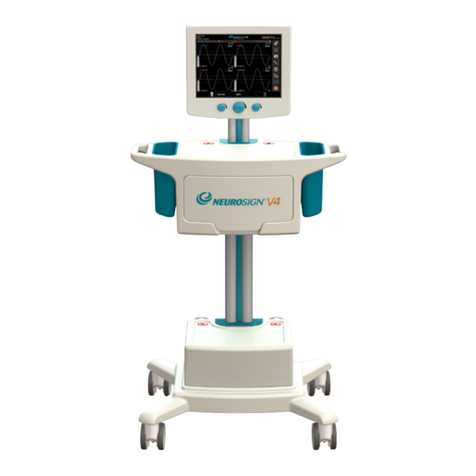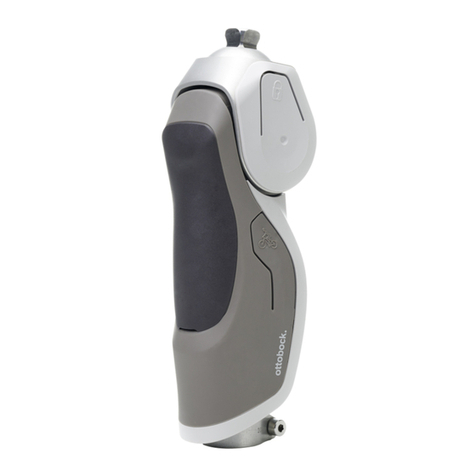Atmos S 351 NATAL User manual

Operating Instructions
ATMOS S 351 NATAL
English
0124
GA1GB.210302.0
2020-06 Index 01 E349855

2
Table of contents
1 Introduction.......................................................................................................4
1.1 Notes on operating instructions ..............................................................................4
1.2 Explanation of pictures and symbols ......................................................................5
1.3 Intended use...............................................................................................................7
1.4 Function.......................................................................................................................9
1.5 Intended users ...........................................................................................................9
1.6 Scope of delivery..................................................................................................... 10
1.7 Transport and storage............................................................................................ 11
2 Notes for your safety......................................................................................12
2.1 General safety instructions.................................................................................... 12
2.2 Danger for users, patients and third parties ....................................................... 12
2.3 Avoiding damage to the device ............................................................................. 14
3 Setting up and starting up .............................................................................16
3.1 Device overview....................................................................................................... 16
3.1.1 Secretion canister .............................................................................................. 17
3.2 Preparing the device............................................................................................... 18
3.3 Connecting to the mains power supply ............................................................... 18
3.4 Connecting the secretion canister system and hoses........................................ 19
4 Operation.........................................................................................................20
4.1 Ambient conditions during operation .................................................................. 20
4.2 Control panel ........................................................................................................... 20
4.3 Switching on the device.......................................................................................... 20
4.4 Switchingothedevice.......................................................................................... 21
4.5 Explanation of the display...................................................................................... 21
4.6 Vacuum extraction mode....................................................................................... 21
4.7 User menu ............................................................................................................... 22
4.7.1 Language ............................................................................................................ 22
4.7.2 Vacuum unit ....................................................................................................... 22
4.7.3 Vacuum extraction............................................................................................. 23
4.7.4 Brightness........................................................................................................... 24
4.7.5 Date ..................................................................................................................... 24
4.7.6 Time..................................................................................................................... 24
4.7.7 Vacuum steps..................................................................................................... 25
4.8 Vacuum extraction .................................................................................................. 25
4.8.1 Additional functions .......................................................................................... 26
4.8.2 Vacuum drop during vacuum build-up ........................................................... 26
4.8.3 Vacuumdropafternalvacuumhasbeenreached ..................................... 26
4.8.4 Final vacuum is not reached............................................................................. 27
4.9 Suction...................................................................................................................... 27
4.10 Electronicll-levelmonitoringsystem.................................................................. 27
4.11 Changing the secretion canister............................................................................ 28
4.12 Warning messages.................................................................................................. 28
4.13 Trolley for ATMOS S 351 with standard rail (REF 320.0070.0)............................ 29
4.14 Trolley for ATMOS S 351 (REF 444.0020.0)............................................................ 29
4.15 Foot controller......................................................................................................... 30
4.16 Checkingthebacteriallter................................................................................... 30

3
5 Reprocessing....................................................................................................31
5.1 Safety instructions for reprocessing..................................................................... 31
5.1.1 General safety instructions............................................................................... 31
5.1.2 Danger for users, patients and third parties.................................................. 31
5.1.3 Avoiding damage to the device........................................................................ 31
5.2 Preparing and completing reprocessing .............................................................. 32
5.3 Preparing surfaces .................................................................................................. 32
5.3.1 Overview ............................................................................................................. 32
5.3.2 Selecting process chemicals............................................................................. 33
5.3.3 Wipe cleaning ..................................................................................................... 34
5.3.4 Wipe disinfection ............................................................................................... 34
5.4 Reprocessing the accessories................................................................................ 34
5.4.1 Overview ............................................................................................................. 34
5.4.2 Selecting process chemicals............................................................................. 34
5.4.3 Secretion canister system................................................................................. 35
5.4.4 Hoses................................................................................................................... 36
6 Maintenance and service...............................................................................38
6.1 Periodic tests ........................................................................................................... 38
6.2 Function check ........................................................................................................ 38
6.2.1 Visual inspection ................................................................................................ 38
6.2.2 Function test....................................................................................................... 39
6.2.3 Monitoring .......................................................................................................... 40
6.3 Sending in the device.............................................................................................. 41
7 Troubleshooting ..............................................................................................42
8 Accessories ......................................................................................................44
9 Consumables ...................................................................................................45
10 Disposal............................................................................................................46
11 Technical data .................................................................................................47
12 Notes on EMC ..................................................................................................49
13 Notice ...............................................................................................................50
14 Notice ...............................................................................................................51

4Introduction
1 Introduction
1.1 Notes on operating instructions
These operating instructions contain important instructions on how to
operateyourproductsafely,correctlyandeectively.
These operating instructions are designed for training and instructing
new operating personnel in the use of the system, and they are also
intended for use as a reference manual. This document may only be
reprinted, either in part or in whole, with written permission from
ATMOS.
These operating instructions must always be kept available near
the product.
Care, periodic tests, regular cleaning and proper application are essen-
tial. They ensure the operational safety and usability of the product.
Maintenance, repairs and periodic tests may only be carried out by
persons who have the appropriate technical knowledge and who are
familiar with the product. The person must possess the test devices
and original spare parts required to carry out these measures.
Read chapter „2 Notes for your safety“ on page 12 before using the
productforthersttime.Thiswillhelpyoutoavoidpotentiallydanger-
ous situations.
The product bears the CE marking CE 0124 in accordance with EC
Council Directive 93/42/EEC concerning medical devices and meets the
basic requirements of Annex I to this directive.
The product complies with all the applicable requirements of Directive
2011/65/EU on the restriction of the use of certain hazardous sub-
stances in electrical and electronic equipment (‘RoHS’).
The Declarations of Conformity and our General Terms and Conditions
can be viewed on our website at www.atmosmed.com.
ThequalitymanagementsystematATMOShasbeencertiedaccord-
ing to international standard EN ISO 13485.
These operating instructions are valid for the following devices:
ATMOS S 351 NATAL, 230 V 444.0401.0
ATMOS S 351 NATAL, 100 V 444.0401.1
ATMOS S 351 NATAL, 115 V 444.0401.2
ATMOS S 351 NATAL, 127 V 444.0401.3
ATMOS S 351 NATAL, 230 V 444.0491.0
ATMOS S 351 NATAL, 100 V 444.0491.1
ATMOS S 351 NATAL, 115 V 444.0491.2
ATMOS S 351 NATAL, 127 V 444.0491.3
ATMOS S 351 NATAL – basic set, 230 V 444.0490.0
ATMOS S 351 NATAL – basic set, 100 V 444.0490.1
ATMOS S 351 NATAL – basic set, 115 V 444.0490.2
ATMOS S 351 NATAL – basic set, 127 V 444.0490.3

5Introduction
ATMOS S 351 NATAL – basic set, 230 V (Medi-Vac®) 444.0492.0
ATMOS S 351 NATAL – basic set, 230 V (Serres®) 444.0493.0
ATMOS S 351 NATAL mobile, 230 V 444.0481.0
ATMOS S 351 NATAL mobile, 100 V 444.0481.1
ATMOS S 351 NATAL mobile, 115 V 444.0481.2
ATMOS S 351 NATAL mobile, 127 V 444.0481.3
ATMOS S 351 NATAL mobile with foot controller, 230 V 444.0482.0
ATMOS S 351 NATAL mobile with foot controller, 100 V 444.0482.1
ATMOS S 351 NATAL mobile with foot controller, 115 V 444.0482.2
ATMOS S 351 NATAL mobile with foot controller, 127 V 444.0482.3
1.2 Explanation of pictures and symbols
In the operating instructions
DANGER
Warning of a danger that will result in immediate fatal or serious injury. Observe the
necessary measures.
WARNING
Warning of a danger that can cause fatal or serious injury. Observe the necessary
measures.
CAUTION
Warning of a danger that can cause minor injury. Observe the necessary measures.
ATTENTION
Notice of a danger that can damage the product or other objects. Observe the neces-
sary measures.
Warning of a danger that can cause fatal or serious injury.
Notice of potential material damage.
Useful information on the handling of the device.
1. Action. Proceed step by step.
»Result of an action.
Move in this direction, plug in.
click Engage,checkcorrectt.
On device and type plate
Follow operating instructions (blue)
Observe the operating instructions

6Introduction
Warning; pay special attention
0124
This product complies with the relevant requirements of EU Directives.
This product complies with the relevant requirements of EU Directives.
UL Listing Mark
MEDICAL — GENERAL MEDICAL EQUIPMENT
AS TO ELECTRICAL SHOCK, FIRE AND MECHANICAL HAZARDS ONLY IN
ACCORDANCE WITH ANSI/AAMI ES60601-1 (2005) + AMD 1 (2012)
CAN/CSA-C22.2 No. 60601-1 (2014)
IEC 60601-1-6 (2013)
Eurasian conformity
GOSTCerticate(Russia)
Manufacturer
Manufacturing date
SN Serial number
REF Order number
EAN European Article Number
Applied part type B
IPX0 No protection from water
Professional disposal
For single use only (symbol located on consumables)
STERILE Product is sterile (unless packaging is damaged or opened)
AUTOCLAVE
Autoclavable
PATIENT Connection for suction hose / patient (Serres® canister system)
LATEX
No natural rubber latex
E349855

7Introduction
Potential equalisation
Fuse
Starting the vacuum extraction mode
Stopping the vacuum extraction mode
-Reduce vacuum
+Increase vacuum
MAX Maximum vacuum
SEMI Vacuum extraction mode ‘SEMI’ activated
AUTO Vacuum extraction mode ‘AUTO’ activated
SSeconds
Connected with trolley
Foot controller
Fragile, handle with care
Store in a dry place
Protect from sunlight
1.3 Intended use
Product name: ATMOS S 351 NATAL
Main function: An electric suction pump controlled by a microprocessor
generates negative pressure. Due to the controlled negative
pressure, parts of the body, in particular the head of a baby,
arexed.
The microprocessor allows the desired vacuum to be gently
increasedanddecreasedwithinthedenedunitoftimeand
enables a controlled shutdown of the pump.
An additional secretion canister must be attached to allow for
temporarycollectionofdrainedbodyuids.

8Introduction
Intended use / intend-
ed purpose:
Vacuum extraction, surgical suction (among others: suction
curettage, suction biopsy), bronchial suction in newborns
Intended user / user
prole:
Medicalsta(amongothers:gynaecologists,midwives)
Intended patient
group:
Generally, female patients of child-bearing age with and
without restrictions; newborns.
Disease state to be
diagnosed, treated or
monitored:
Inapplicable
Application organ: Naturaloricesaswellasopeningsresultingfromsurgical
procedures (entire body)
Application time: Short-term use on the patient (< 60 minutes)
Area of application: The area of application is the clinical setting (among others:
OTanddeliveryroom).Thedevicemayonlybeusedbysta
who have been medically trained and instructed.
Criteria for patient
selection:
Patientswhobenetfromvacuumextraction,asurgical
procedure or bronchial suction
Indications: • For vacuum extraction
• In surgical procedures (e.g. suction curettage, suction
biopsy)
• For bronchial suction in newborns
Medical contraindica-
tions:
Not suitable for:
• Continuous operation for drainage procedures in the low
vacuum range (e.g. cardiothoracic or wound drainage)
• Smoke evacuation
• Liposuction
• Emergency and rescue use
Other contraindica-
tions:
• No application outside of medical areas
• Nosuctionofammable,corrosiveorexplosiveuids/
gases

9Introduction
Warning notes: The following complications can occur during vacuum extrac-
tion or suction:
• Cerebral haemorrhages
• Cephalohaematomas
• Skin abrasions on the child’s head
• Haematomas
• Perineal, vaginal, cervical tears
• Bleeding
• Injuries to vessels and nerves
• Adhesion of the suction instrument
The product is: Active
Sterility / specic
microbial condition:
Not a sterile product
Single-use product /
reprocessing:
The device and parts of the accessories are reusable. For
information on reprocessing, cleaning and disinfection, please
see the operating instructions.
1.4 Function
The products are mains-operated medical suction devices designed for vacuum ex-
traction, temporary surgical suction and bronchial suction in newborns. The product is
employedduringvacuumextractiontoxthebaby’sheadwiththeaidofanextraction
cup. In addition, suction material (among other things: secretion, blood) is temporarily
collected in a collection canister and subsequently disposed of.
During operation, the pump generates vacuum in the secretion canister and hoses,
bymeansofwhichtheextractioncupcanbexedonthebaby’shead.Furthermore,
secretion,bloodandbodyuidscanbesuctioned.Theuidiscollectedinthesecretion
canister.Thebuttonsallowyoutosetthenalvacuumandthusthesuctioncapacity
insteps.Thesetvaluecanbereadonthevacuumdisplay.Oncethenalvacuumis
reached,thepumpturnsoandonlycontinuesworkingifsuctioncapacityfallsbelow
thenalvacuumvalue.
Two vacuum extraction modes are available for vacuum extraction:
• SEMI:Thedeviceautomaticallygeneratesabasevolumelevelof−20kPa(−200
mbar; 150 mmHg). After reaching the base volume level, the user can check the
correctpositioningoftheextractioncup.Afterconrming(bypressingbutton1(ON)
forswitchingonautomaticvacuumbuild-up),thedevicegeneratesthedesirednal
vacuumwithinthespeciedunitoftime.Oncethenalvacuumhasbeenreached,
the device indicates this audibly and visually.
• AUTO:Thedeviceautomaticallygeneratesthedesirednalvacuumwithinthe
speciedunitoftime.Oncethenalvacuumhasbeenreached,thedeviceindicates
this audibly and visually.
After completing vacuum extraction or at any other time, the vacuum extraction mode
can be stopped by pressing button 2 (OFF). The user can set the duration of the individu-
al phases as well as the level of vacuum to be built up in the user menu.
1.5 Intended users
The device may only be used by trained and instructed medical professionals.

10 Introduction
1.6 Scope of delivery
Legend:
Name REF Number
Basic device 1
Power cable 5 m 008.0629.0 2
Hydrophobicbacterialandvirallter 443.0738.0 3
Connecting hoses 999.0128.0
999.0127.0
4
Extraction hose, green, Ø 6 mm, L = 1.5 m 404.0146.0 5
Hose holder, for attachment to a standard rail 444.0450.0 6
Secretion canister 1.5 l (PC) 444.0100.0 7
Nipplesetwithoverowelectrode 444.0012.0 8
Secretion canister lid incl. standard rail holder 444.0150.0 9
Trolley with standard rail ATMOS S 351 320.0070.0 10
Foot controller for ATMOS S 351 444.0478.0 11
Standard rail holder for Medi-Vac® 444.0451.0 12
Medi-Vac® outer canister 1 l 312.0473.0 13
Standard rail holder for Serres® complete 444.0484.0 14
Serres® outer canister 312.0465.0 15
Scope of delivery:
Basic device name REF Includes num-
ber
ATMOS S 351 NATAL, 230 V 444.0401.0 1, 2
ATMOS S 351 NATAL, 100 V 444.0401.1 1, 2
ATMOS S 351 NATAL, 115 V 444.0401.2 1, 2
ATMOS S 351 NATAL, 127 V 444.0401.3 1, 2
ATMOS S 351 NATAL, 230 V 444.0491.0 1, 2, 3, 4, 6
ATMOS S 351 NATAL, 100 V 444.0491.1 1, 2, 3, 4, 6
ATMOS S 351 NATAL, 115 V 444.0491.2 1, 2, 3, 4, 6
ATMOS S 351 NATAL, 127 V 444.0491.3 1, 2, 3, 4, 6
ATMOS S 351 NATAL – basic set, 230 V 444.0490.0 1–9
ATMOS S 351 NATAL – basic set, 100 V 444.0490.1 1–9
ATMOS S 351 NATAL – basic set, 115 V 444.0490.2 1–9
ATMOS S 351 NATAL – basic set, 127 V 444.0490.3 1–9
ATMOS S 351 NATAL – basic set, 230 V (Medi-Vac®) 444.0492.0 1, 2, 3, 4, 5, 6,
12, 13
ATMOS S 351 NATAL – basic set, 230 V (Serres®) 444.0493.0 1, 2, 3, 4, 5, 6,
14, 15
ATMOS S 351 NATAL mobile, 230 V 444.0481.0 1–10
ATMOS S 351 NATAL mobile, 100 V 444.0481.1 1–10
ATMOS S 351 NATAL mobile, 115 V 444.0481.2 1–10
ATMOS S 351 NATAL mobile, 127 V 444.0481.3 1–10

11Introduction
ATMOS S 351 NATAL mobile with foot controller, 230 V 444.0482.0 1–11
ATMOS S 351 NATAL mobile with foot controller, 100 V 444.0482.1 1–11
ATMOS S 351 NATAL mobile with foot controller, 115 V 444.0482.2 1–11
ATMOS S 351 NATAL mobile with foot controller, 127 V 444.0482.3 1–11
1.7 Transport and storage
Onlytransporttheproductinashippingcartonthatispaddedandoerssucient
protection.
If damage occurs during transport:
1. Document and report damages in transit.
2. Send the device to ATMOS; see chapter „6.3 Sending in the device“ on page 41.
Ambient conditions for transport and storage:
• Temperature: −10...+60°C
• Relative humidity: 30...95% without condensation
• Atmospheric pressure: 700...1060hPa

12 Notes for your safety
2 Notes for your safety
The safety of the ATMOS S 351 NATAL complies with the accepted standards of technolo-
gy and the guidelines of the German Medical Devices Act.
2.1 General safety instructions
Familiarise yourself with the device in good time so that you are capable of operating it
at any time.
Only a fully functional product meets the safety requirements of users, patients
and third parties. Therefore, please observe the following instructions on your
product:
Never operate the device if it shows any obvious safety defects.
2.2 Danger for users, patients and third parties
Electric shock due to unsuitable mains power connection, incorrect handling of
the product or damage to product components.
Burns, cardiac arrhythmias and even fatal injury are possible.
• Do not operate the device if it has been dropped. In this case, clean and disinfect the
device and send it to ATMOS for repair.
• Prior to each use, check for damage to the device and the power cable. Do not oper-
ate the device if you notice any damage. In this case, clean and disinfect the device
and send it to ATMOS for repair.
• You can only disconnect the device from the mains power supply by pulling out the
power plug.
• Position the device in such a way that you can easily disconnect it from the mains
power supply at any time.
• When disconnecting the device from the mains power supply, pull the power plug
rstandthenthedeviceplug.
• Disconnect the device from the mains power supply before cleaning or disinfecting
it.
• Never touch the power plug or power cable with wet hands.
• Never immerse the device in water or other liquids.
• The device is not sterilisable.
• Use the power cable only in dry surroundings. The surroundings must be non-con-
ductive.
• Ensure that no liquid enters the device. If liquid gets into the device, operation of the
device must cease immediately. In this case, clean and disinfect the device and send
it to ATMOS for repair.
• Only use original accessories and original spare parts from ATMOS. This applies to
the power cable in particular.
• Follow the instructions on periodic tests in chapter „6 Maintenance and service“ on
page 38.
• Assembly, new settings, alterations, extensions and repairs may only be carried out
by authorised persons.
• Do not modify the device without the manufacturer’s permission.

13Notes for your safety
Risk of infection due to patient secretion on the device!
Deadly diseases can be transmitted.
• Always wear disposable gloves if you could come into contact with secretion.
• Never use components marked with 2more than once. These components are
intended for single use only.
• Sterile-packed parts may only be used if the packaging is undamaged.
• Donotoperatethedevicewithoutabacteriallter.
• Beforeeachuse,checkthatthebacteriallterisdryandcleantoensurethatit
operates correctly.
• A suction catheter, suction attachment or suction instrument must always be con-
nected to the suction hose. The suction hose must never come into direct contact
with the suction area.
• Clean and disinfect the device after every use.
• Clean and disinfect the device according to the operating instructions.
• The device must not be used following oversuction.
Ensure that the device is always functional and ready for use.
Your patient can be severely injured.
• Ensure that the device is always ready for use.
• Place the device where it is easily accessible.
• Perform a function check after each use.
• ATMOS recommends always having another suction device ready at hand. That way
you can also perform suctioning if a device should fail.
• Please observe the notes on the electromagnetic compatibility (EMC) of the device.
Avoid improper use (vacuum extraction).
The baby can be severely injured.
• You as the treating user are responsible for the proper procedure and techniques!
The appropriateness and the kind of application must be decided by a trained
doctor on a case-by-case basis.
• The level of preselected vacuum and the selection of additional products must be
made for all applications according to the corresponding specialist.
• Vacuum values that are too high can lead to tissue damage.
• Vacuumvaluesthataretoolowcancausetheextractioncuptotearo.
• Always use a secretion canister having a minimum capacity of 1 litre.
• Check the vacuum continuously during vacuum extraction.
• Only use transparent hoses or hoses intended for vacuum extraction.
• During vacuum extraction, the vacuum must be built up slowly in a controlled
manner.
• During vacuum extraction, the system must not be ventilated suddenly while simul-
taneously pulling on the extraction cup.
• Using the foot controller during vacuum extraction disables the vacuum extraction
automatic mode.
• Vacuum extraction is not possible at elevated altitudes, as it may not be possible to
achieve the vacuum required.

14 Notes for your safety
Avoid improper use (suction).
Your patient can be severely injured.
• Employ the device only according to its intended use.
• The product may only be used by medically trained persons who have been instruct-
ed in the handling of the medical suction system.
• Please select the vacuum according to the patient and the application.
• Observe the valid guidelines.
• Observe the notes on hygiene and cleaning.
Explosion and re hazard.
There is a risk of burns and injuries.
• Neversuctionanyexplosive,ammableorcorrosivegasesorliquids.Pleaseobserve
the intended use in chapter „1.3 Intended use“ on page 7.
• Never operate the product in potentially explosive areas or in areas that are oxygen-
ated.
• Only use original accessories and original spare parts from ATMOS. This applies to
the power cable in particular.
Tripping hazard due to cables.
Injuries and fractures are possible.
• Lay the power cable properly.
WARNING
Contact may cause allergic reactions!
The materials used have been tested for their tolerability. In very rare cases, con-
tact with accessible materials on the device and its accessories may cause allergic
reactions. This applies in particular to contact injuries in conjunction with prolonged
contact. If this occurs, seek medical attention immediately.
Only a fully functional product meets the safety requirements of users, patients and
third parties. Therefore, please observe the following instructions on your product:
2.3 Avoiding damage to the device
Storage and operation in an unsuitable environment.
The electronics can become damaged.
• Please observe the ambient conditions for transport, storage and operation.
• Alwaysplacethedeviceonrm,levelground.Thedevicemustalwaysbeinavertical
position when you use it. Otherwise, secretion may enter the device.

15Notes for your safety
ATTENTION
Damage to device due to heat build-up!
The device may become damaged.
• Do not cover the device during suction.
• Keep the device and the power cable away from other heat sources.
• Do not place the device directly next to other devices as this may cause excessive
heating of the device.
ATTENTION
Damage to the device due to improper use!
The device may become damaged.
• Ensure that no liquid enters the device. Once liquid has entered the device, it may
no longer be used. In this case, clean the device and send it to ATMOS for repair.
• Alwaysplacethedeviceonrm,levelground.Thedevicemustalwaysbeina
vertical position when you use it.
• Use only power cables and extension cords that function properly.

16 Setting up and starting up
3 Setting up and starting up
3.1 Device overview
Front view
1
2
3
4
6
5
7
1ON / OFF switch
2Display
3Support for canister system
4Bacteriallter
5Connection for suction hose
6Secretion canister lid
7Connection for extraction cup
Rear view
5
4
3
2
1
1Pump connection
2Connection for foot controller
3Service interface for data read-out
4Potential equalisation
5Mains supply

17Setting up and starting up
3.1.1 Secretion canister
Reusable canister system
12
4
3
56
7
1Locking handle
2Knurled screw for locking the lid
insert and for adjusting the clamping
force
3Release button
4Fill-level sensor with anti-foaming
device
5Lid rim
6Aperture for double hose connector
7Contactsforll-levelmonitoring
Disposable canister system
Serres® canister system
2
1
3
4
1Angle (connection for disposable
suction hose)
2Serres® suction liner
3Serres® outer canister
4Grey angle on the Serres® outer
canister (connection for vacuum
hose)
Medi-Vac® canister system
1
2
4
5
3
1Angle (connection for disposable
suction hose)
2Red hose
3Medi-Vac® suction liner
4Connection for vacuum hose
5Medi-Vac® outer canister

18 Setting up and starting up
Device suspension for Serres® Support for Medi-Vac®
3.2 Preparing the device
Read the safety information in chapter „2 Notes for your safety“ on page 12 carefully
before using the product.
Damaged pump diaphragms due to cold temperatures during transport.
1. Incasethedevicewastransportedattemperaturesbelow−5°C:letthedevicestand
at room temperature for at least 6 hours before proceeding with the next steps
2. Check the device, secretion canisters, power cable, accessories and hoses for possi-
ble damage.
3. If the device is damaged: document and report the damages in transit. Send the
device to ATMOS (chapter „6.3 Sending in the device“ on page 41).
4. If the device is not damaged: place the device on a safe, level surface.
3.3 Connecting to the mains power supply
1. Check whether the voltage and frequency data listed on the device correspond to
the values of the mains power supply.
2. Connect the device to the mains.
3. Secure the power cable against accidental removal by using the safety clamp.

19Setting up and starting up
3.4 Connecting the secretion canister system and hoses
1. The anti-foaming device must be placed on the
ll-levelsensorforstronglyfoamingsecretion.
2. Slide the secretion canister lid with the release
button pointing forward onto the secretion
canister.
Make sure that the lid rim is under the bead of
the secretion canister. This seals the secretion
canister tightly and the desired vacuum can be
built up in the secretion canister.
3. Press the locking handle downwards until it
clicks into place.
4. Hang the secretion canister in the left or right
support for the canister system.
Using the support for the canister system for
purposes other than what it was designed for can
cause malfunctions.
1. Push the double hose connector into the
canister lid twisting gently.
» The double hose connector locks into place.
1. Connect a short hose to the pipe connection on
thedeviceandtothebacteriallter.
2. Connect a longer hose to the printed side of
thebacteriallterandtotheverticalttingof
the double hose connector.
Never operate the device without a bacterial
lter.
1231. Connect the suction hose (Ø 10 mm) to the
angledtting(2)ofthedoublehoseconnector.
Use a hose reducer (3) for suction hoses with a
Ø of 6 mm.
2. Use the vacuum extraction suction hose to join
thehorizontaltting(1)ofthedoublehose
connector with the extraction cup.

20 Operation
4 Operation
4.1 Ambient conditions during operation
• Temperature: +5...+40°C
• Relative humidity: 30 ... 95% without condensation
• Atmospheric pressure: 700 ... 1060 hPa
4.2 Control panel
+
+
-
-
MAX
MAX
S 351 NATAL
high vacuum / high ow
ON
ON
OFF
OFF
4
5 6 7
3
21
1Button for switching on the automatic vacuum build-up (ON)
2Buttonforswitchingotheautomaticvacuumbuild-up(OFF)
3LEDs for indicating the active function
4Display
5Button for reducing the vacuum
6Button for increasing the vacuum
7Button for selecting the maximum vacuum
4.3 Switching on the device
1. Press the ON / OFF switch.
» The start screen appears.
» The pump starts. The pump starts automatically in the stored vacuum extraction
mode (SEMI or AUTO).
» By pressing button 2 (OFF), you stop vacuum extraction mode and are immediately
redirected to suction mode.
» The ON / OFF switch remains lit as long as the device is on.
Other manuals for S 351 NATAL
1
This manual suits for next models
22
Table of contents
Other Atmos Medical Equipment manuals
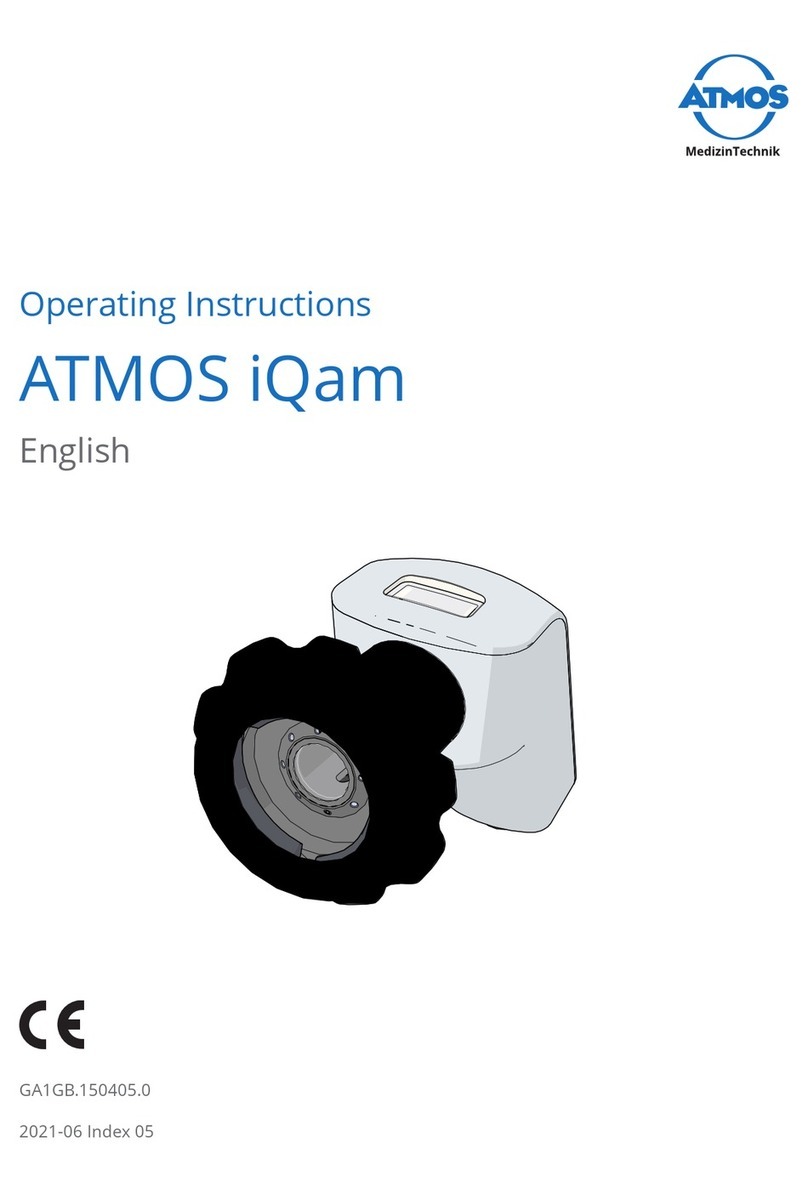
Atmos
Atmos iQam User manual
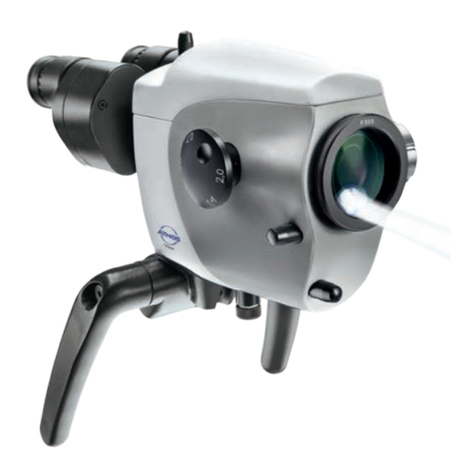
Atmos
Atmos i View 21 COLPO User manual
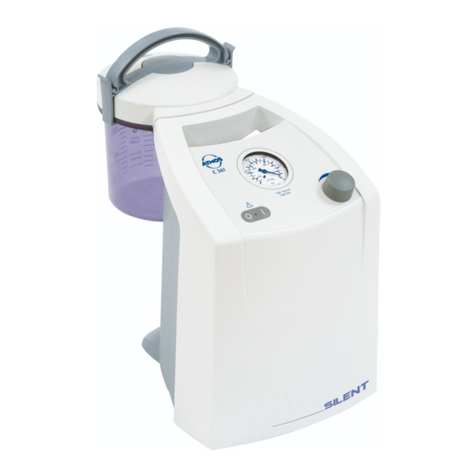
Atmos
Atmos C 361 User manual
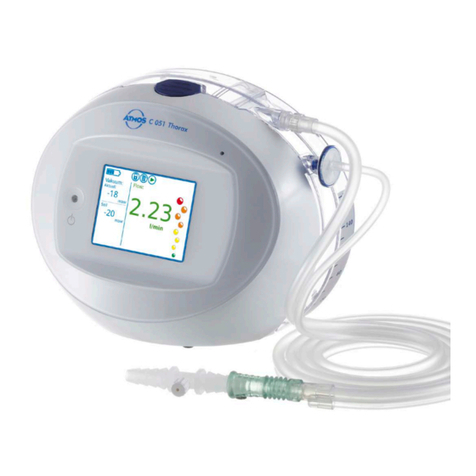
Atmos
Atmos C 051 Thorax User manual
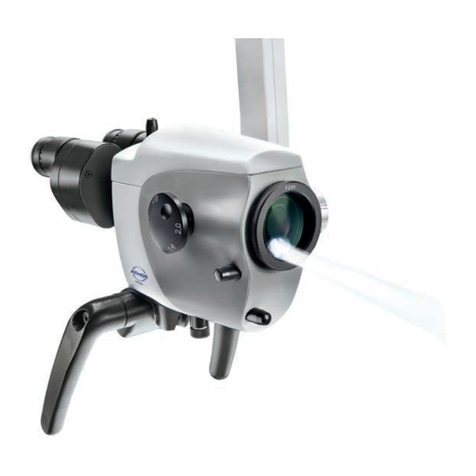
Atmos
Atmos i View 21 User manual
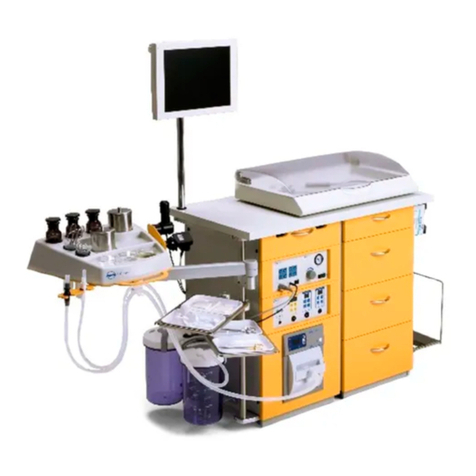
Atmos
Atmos S 41 Gyne User manual

Atmos
Atmos C 051 Thorax User manual

Atmos
Atmos A 161 User manual
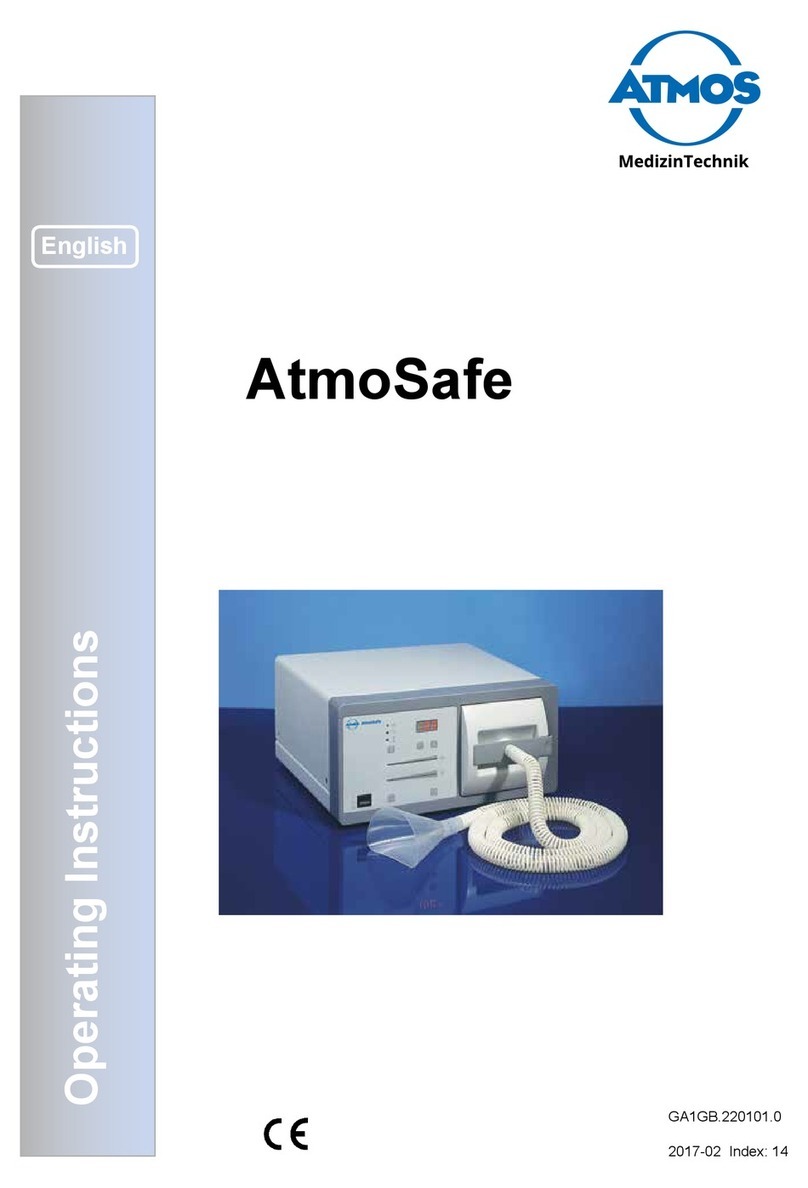
Atmos
Atmos AtmoSafe User manual

Atmos
Atmos Scope User manual
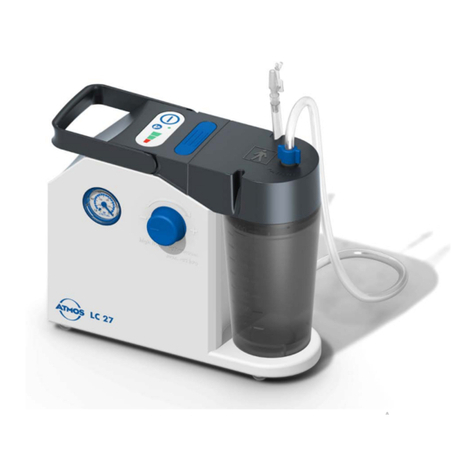
Atmos
Atmos LC 27 User manual
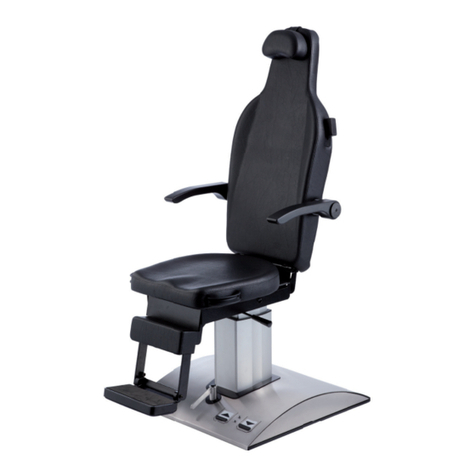
Atmos
Atmos E 2 User manual

Atmos
Atmos C 361 User manual
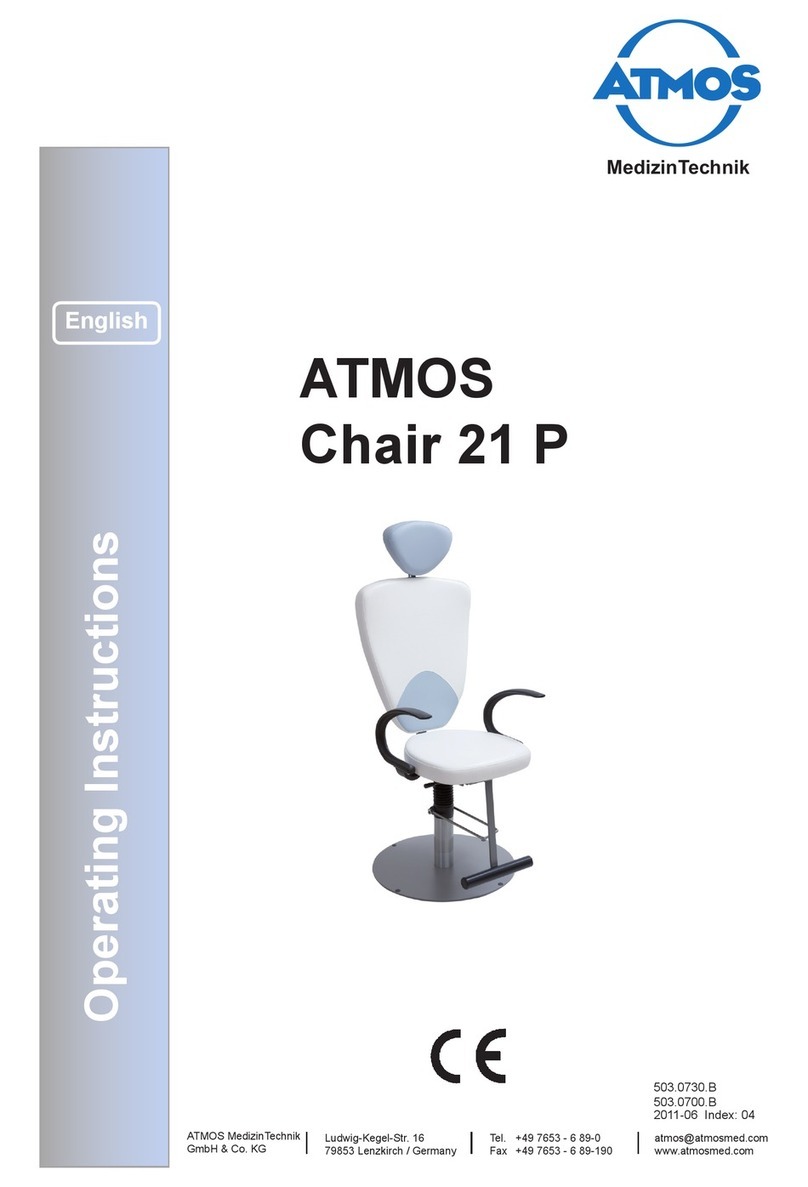
Atmos
Atmos Chair 21 P User manual

Atmos
Atmos Chair 21 P User manual
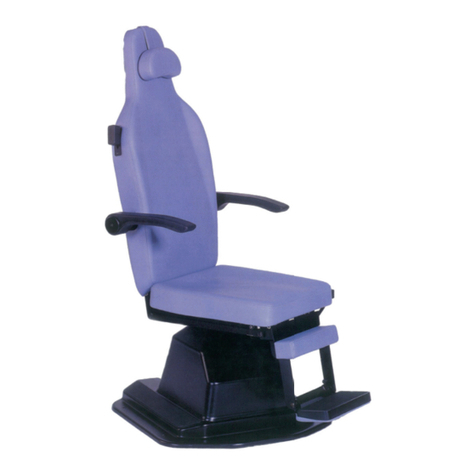
Atmos
Atmos E 1 User manual

Atmos
Atmos LC 27 User manual
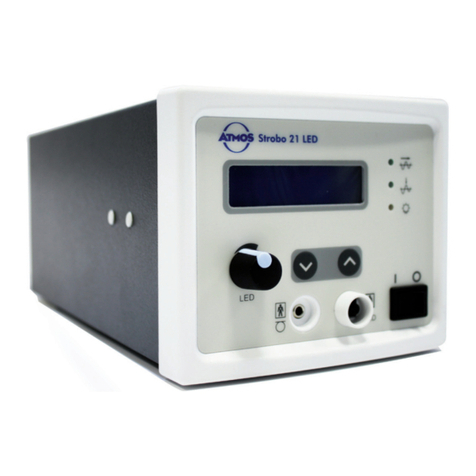
Atmos
Atmos Strobo 21 LED User manual
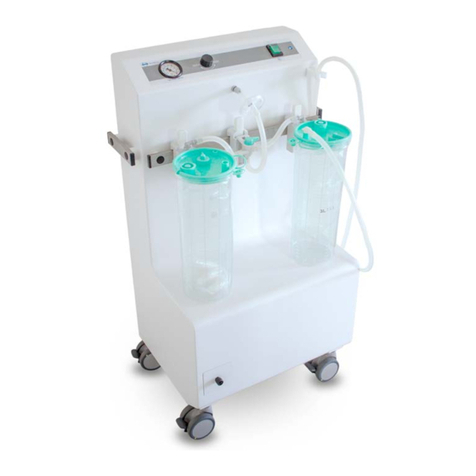
Atmos
Atmos Record 55 User manual
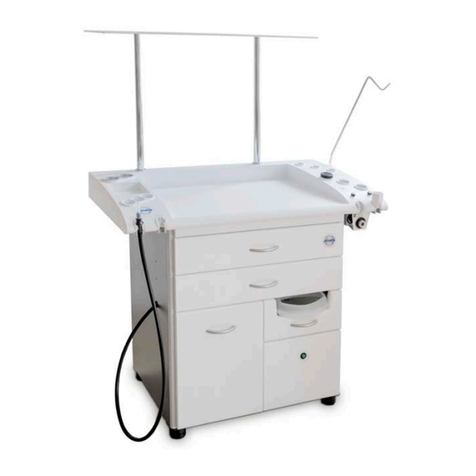
Atmos
Atmos C 11 Systema User manual

